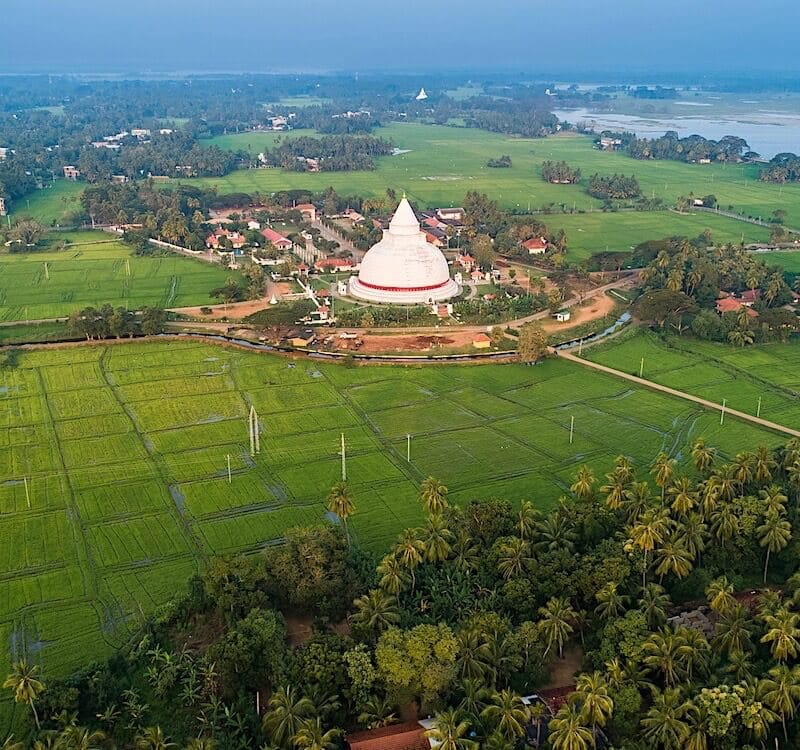Degalldoruwa Raja Maha Viharaya
Degalldoruwa Raja Maha Viharaya is a hidden treasure of Sri Lanka, located just a short distance from Kandy. This ancient…
View Details
Sri Lanka, a land rich in cultural heritage and ancient wonders, is home to a multitude of sacred sites that have withstood the test of time. Among these treasures is the Tissamaharama Stupa, a revered Buddhist monument that stands as a testament to the island’s deep-rooted spiritual traditions and architectural marvels. In this guide, we will embark on a journey to explore the history, significance, and the serene beauty of the Tissamaharama Stupa.
The Tissamaharama Stupa, also known as the Tissamaharama Dagoba, holds a special place in the hearts of Sri Lankans as one of the island’s most ancient stupas. Located in the town of Tissamaharama in the Southern Province, this stupa is a testament to the enduring faith of the people and the grandeur of ancient Sinhalese architecture.
Historical records suggest that the stupa was constructed during the reign of King Kavantissa, a revered figure in Sri Lankan history, in the 2nd century BC. This makes the Tissamaharama Stupa over two thousand years old, adding to its significance as one of the oldest stupas in the country.
The Tissamaharama Stupa is not only a magnificent architectural marvel but also a symbol of profound spiritual and cultural importance. It is believed to enshrine relics of Lord Buddha, making it a revered pilgrimage site for Buddhists from around the world.
The stupa’s architectural design is a fascinating blend of ancient Sinhalese and Indian styles, showcasing the rich cultural exchange that took place in the region during that era. Its sprawling terrace, intricately carved railings, and serene surroundings create an atmosphere of tranquility and reverence.
The Tissamaharama Stupa continues to be a place of worship and celebration, where devotees and visitors come together to partake in various rituals and festivals. One of the most significant events is the “Katharagama Perahera,” a grand procession that pays homage to God Skanda, a deity associated with the stupa.
During the festival, the streets of Tissamaharama come alive with colorful processions, traditional dance performances, and vibrant decorations, making it a spectacle that truly reflects the cultural richness of the region.
Before you visit the Tissamaharama Stupa, consider these practical details:
The Tissamaharama Stupa is not just a historical relic; it is a living testament to the spiritual and cultural heritage of Sri Lanka. Whether you’re drawn to its ancient grandeur, the sense of serenity it offers, or the opportunity to witness traditional rituals and festivals, the Tissamaharama Stupa promises an enriching experience that will leave you with a deep appreciation for the island’s remarkable history and enduring traditions.
It’s a place where the stupa whispers tales of centuries past, where rituals and festivals ignite a sense of wonder, and where the heart is touched by the spiritual legacy of Sri Lanka. The Tissamaharama Stupa is a destination that offers a deep connection with history, a sense of awe, and the promise of a serene journey through time and culture.